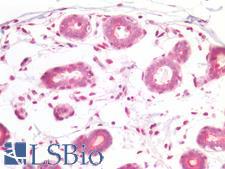Login
Registration enables users to use special features of this website, such as past
order histories, retained contact details for faster checkout, review submissions, and special promotions.
order histories, retained contact details for faster checkout, review submissions, and special promotions.
Forgot password?
Registration enables users to use special features of this website, such as past
order histories, retained contact details for faster checkout, review submissions, and special promotions.
order histories, retained contact details for faster checkout, review submissions, and special promotions.
Quick Order
Products
Antibodies
ELISA and Assay Kits
Research Areas
Infectious Disease
Resources
Purchasing
Reference Material
Contact Us
Location
Corporate Headquarters
Vector Laboratories, Inc.
6737 Mowry Ave
Newark, CA 94560
United States
Telephone Numbers
Customer Service: (800) 227-6666 / (650) 697-3600
Contact Us
Additional Contact Details
Login
Registration enables users to use special features of this website, such as past
order histories, retained contact details for faster checkout, review submissions, and special promotions.
order histories, retained contact details for faster checkout, review submissions, and special promotions.
Forgot password?
Registration enables users to use special features of this website, such as past
order histories, retained contact details for faster checkout, review submissions, and special promotions.
order histories, retained contact details for faster checkout, review submissions, and special promotions.
Quick Order
PathPlusTM IGF1 Antibodies
IGF1 (also somatomedin C) is an insulin-like growth factor hormone that is produced by the liver after growth hormone (GH) stimulation. It is similar in structure to insulin. It is important for childhood growth and regulates [1-14C]-2-deoxy-D-glucose (2DG) transport and glycogen synthesis in osteoblasts. IGF1 is effective at stimulating glucose transport, glycogen and DNA synthesis, and glucose uptake at much lower concentrations than insulin. It is also thought to play a role in synapse maturation. Disorders involving IGF1 include Laron dwarfism, where an absence of IGF1 produces growth failure, as well as acromegaly, where excess growth hormone and IGF1 lead to metabolic dysfunction. The inhibition of binding of IGF1 to its receptor IGF1R is also an anti-tumor therapy for cancers that depend on activating mutations in the downstream PI3K-AKT-mTOR pathway. In immunohistochemistry, IGF1 has extracellular and secreted positivity in plasma and is found in all tissues throughout the body.
References: Nat Rev Endocrinol. 10 (4): 243–8. doi:10.1038/nrendo.2014.21. PMID 24566817; Endocrinology and metabolism clinics of North America. 2012. 41(2): 335-50, DOI:10.1016/j.ecl.2012.04.014;
1 PathPlusTM Antibody

☰ Filters
Products
Antibodies
(1)
Type
Primary
(1)
Target
IGF1
(1)
Reactivity
Human
(1)
Application
IHC-P
(1)
WB
(1)
ELISA
(1)
Host
rabbit
(1)
Product Group
PathPlus Cancer
(1)
Isotype
IgG
(1)
Clonality
polyclonal pc
(1)
Format
Unconjugated
(1)
Publications
No
(1)

Cancer
IGF1 Rabbit anti-Human Polyclonal Antibody
Human
ELISA, IHC-P, WB
Unconjugated
50 µg/$485
Viewing 1-1
of 1
product results











